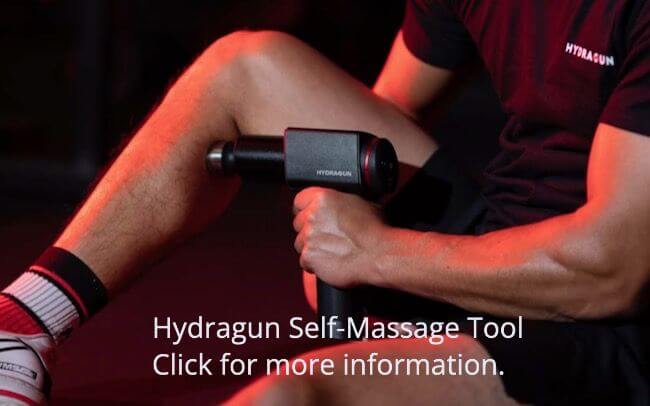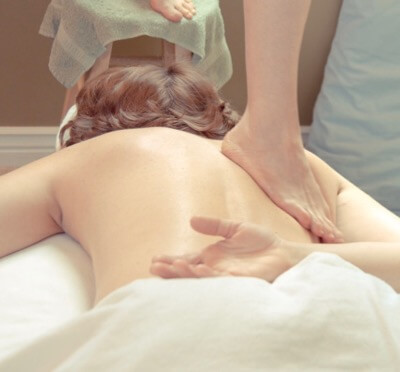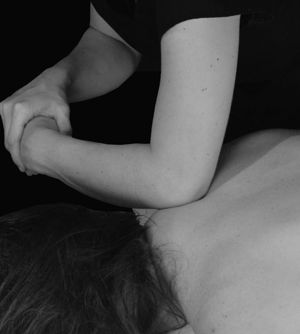- Home
- Massage Types
- Polarity Therapy
As an Amazon Associate and affiliate with other programs, I may earn revenue from qualifying purchases through affiliate links. This does not affect the price you pay. Privacy Policy / Disclosures. This site is for educational purposes only.
Polarity Therapy: Balancing Your Body's Energy Field
Polarity therapy (PT) is an energy technique used by a few massage therapists in their practices.
However, becoming a polarity practitioner doesn't require being a massage therapist. Chiropractors, physical therapists, and others can learn this energy therapy, which focuses on balancing the human energy field as the foundation of good health. Practitioners use techniques to free energy blockages in a person, promoting self-healing.
Theory of PT
Humans are energetic beings with an inherent electrical nature that includes electrical activity in every cell, tissue, and organ system. Randolph Stone, an osteopath, chiropractor, and naturopath, based his development of PT on his worldwide studies of healing methods, along with Western manipulative techniques, naturopathy, Traditional Chinese Medicine, and Ayurveda.
Stone chose the word "polarity" to describe the nature of the body's electromagnetic energy fields. Energy flows horizontally and vertically in the body and also spirals from the top of the body downward and from the center outward. Stone called these three flows the triune function. He believed the outward flow or positive flow represents motor function while the return flow or negative pole is sensation.
The electrical flow of energy in the body is polarized (that is, the body has areas of positive and negative charges). The goal of PT practitioners is to connect the energy between each pole, helping reestablish the healthy flow of energy.
Stone found the following factors affect the human energy field: touch, diet, movement, sound, attitudes, relationships, and the environment. The core of PT is reconnecting with the sources of life energy within yourself and overcoming the human tendency to become fixated.
Practice of Polarity Therapy
Polarity therapy has four components:
- Bodywork: Techniques include rocking, stretching, and touch based on energy flow. Touch may be neutral and gentle (satvic), moderate pressure for stimulation (rajasic), or deep (tamasic) touch to disperse resistant tension. The practitioner uses bipolar contact, placing hands or fingers on the negative and positive areas at the same time to release the flow of energy.
- Movement: Polarity yoga consists of gentle stretching postures that include gentle rocking movements and also incorporate sound, breath, and self-massage that work with the flow of energy in your body.
- Nutrition: The polarity diet is based on the energetic properties of food. For example, high-protein foods represent fire and provide warmth and power, while fruits represent air and improve oxidation in the circulatory and nervous systems. The diet advocates a version of food combining.
- Verbal support: The purpose is to enhance self-awareness and support good attitudes based on the belief that "right thinking" is the cornerstone of good health. In other words, what you think and speak, you become. Negative thoughts can block energy flow in the same way physical injury can. Stone taught tolerance, nonjudgment, forgiveness, and embracing the wholeness of life.
PT Training
After more than 50 years of developing PT, Stone retired in 1974, and his students continued his work, setting up the American Polarity Therapy Association (APTA).
Two levels of training are available. The associate polarity practitioner course is a minimum of 155 hours, while training to become a registered polarity practitioner (RPP) requires a minimum of 615 hours from an APTA-approved training program.
Practitioners learn how to work with body, mind, emotions, and spirit, while learning how to care for themselves first and clear their own energy fields.
Sources
Eileen DeLise Kennedy, "Polarity Therapy: 'Going Wireless'," Massage Therapy Journal, Winter 2002.
Paula Phillips, "PT: Bodywork to Address Our Energetic Nature," Massage Magazine, May/June 1998.
Shirley Vanderbilt, "PT: Interfacing Subtle Energy with Massage," Massage & Bodywork, February/March 2004.
Photo Credit: erikdegraaf / 123RF Stock Photo










